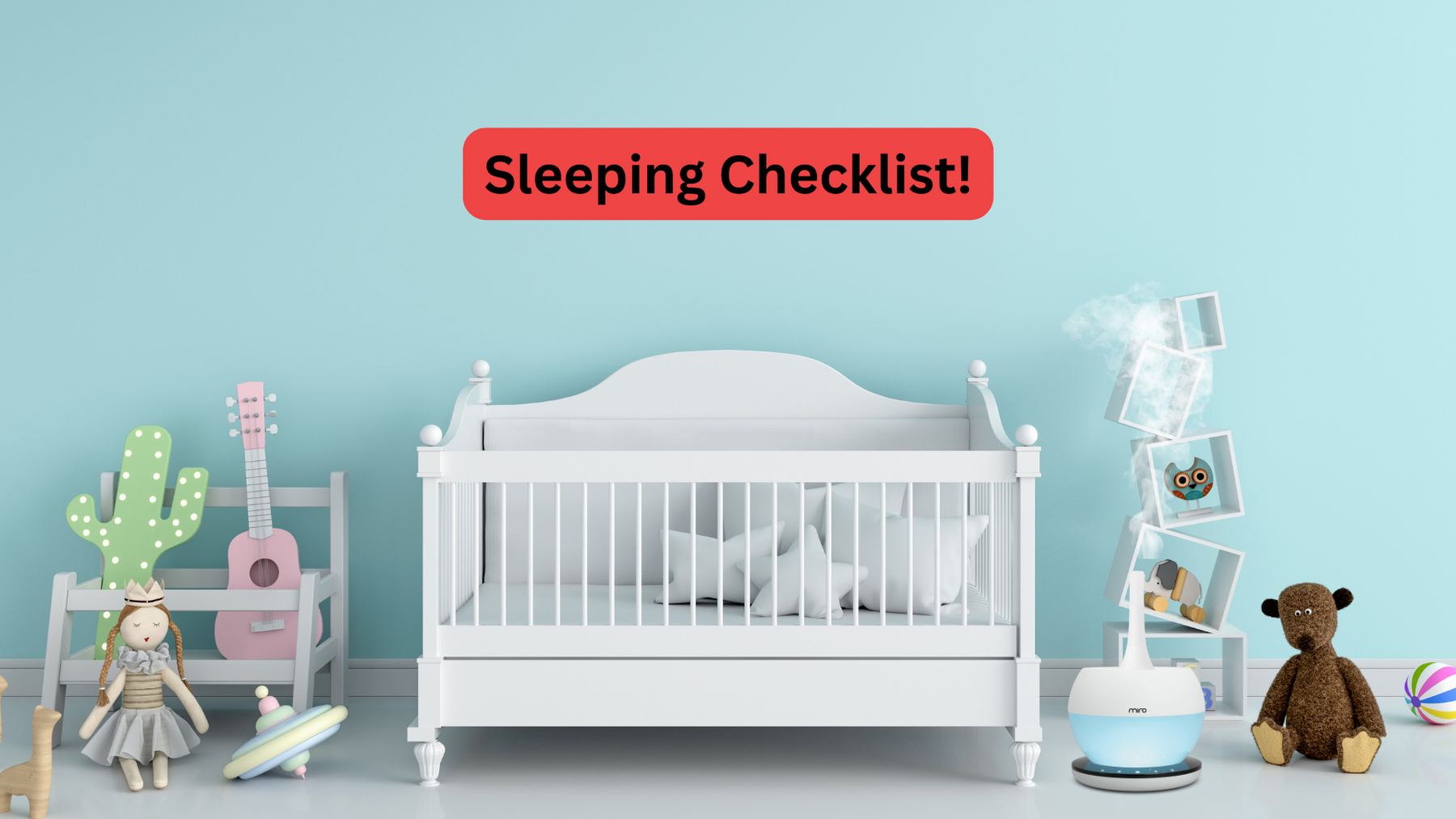
Your Baby's Sleep: Things to Remember
Your baby’s sleeping patterns should be established with your baby’s safety as a top priority. We will go over some of the most important considerations you should make when building your baby’s sleeping environment and putting your baby to bed. Your baby’s sleep is a key component of your infant’s developmental health. As a parent, it is essential that you take the proper steps to establish a safe and comfortable space for your baby to sleep in.
Sleep in the Crib
The crib is the safest place for your baby to sleep during the first year of life (Paediatric Child Health). Your baby should always be positioned on its back to ensure that your baby is receiving the proper amount of oxygen.
Sleeping Surface
Your baby should sleep on a firm, flat surface. Make sure to not use anything like a mattress topper in your baby’s crib. Limit the number of objects in your baby’s crib to prevent suffocation. Anything that is aimed at limiting your baby’s movement, like foam wedges, should not be used in your baby’s crib.
Room
The room your baby sleeps in should be relatively quiet with as few distractions as possible. Any type of distraction in your baby’s room can prevent them from getting adequate rest. You may want to consider a humidifier for your baby’s room. A humidifier can help your infant’s breathing allowing them to rest easier. However, only certain types of humidifiers should be used around babies. Humidifiers, like warm mist humidifiers, that pose a potential risk should never be used around children. Luckily, a humidifier like the Miro NR08M, an ultrasonic humidifier, would be perfect to use in your newborn’s room. The Miro NR08M is equipped with humidity sensors and can be almost entirely cleaned with just soap and water. These features ensure that your baby will be in an environment with optimal humidity and limit the potential dangers of mold and bacteria growth in your humidifier. The Miro NR08M is the humidifier for parents.
Temperature
Your baby should sleep in an environment that is slightly cool. Limit the use of blankets with your baby if they are cold. Rather, the use of sleepers might be a safer option to warm your newborn.
Pacifier
You can offer a pacifier to your baby during naps and bedtime (Dumaplin).
Sleep Outside The Crib
If your baby falls asleep outside the crib, make sure to move them to a flat sleeping surface. If your baby falls asleep in your arms, do not fall asleep with them. Rather, place the baby in its crib or on a flat surface that is safe enough for your baby to sleep on.
Sleeping Schedule
Make sure that your baby follows a consistent sleeping schedule. Understanding your baby's “wake windows,” the windows of time that your baby is awake, is an important tool that you can use to help establish a dependable sleeping schedule. The use of a sleeping schedule is also helpful for you, as parents, to understand your baby’s behavior and sleeping patterns.
